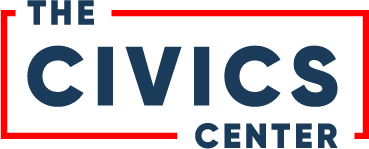Bring Young Voters Onto the Voter Rolls NOW
There is a persistent 25-40 percentage point gap in registration comparing 18 & 19 year olds to older Americans. The time to remedy that is now.
It is easy to think, in mid-October 2023, that there is still a long runway and ample breathing room to start getting engaged in the 2024 election. But if you believe that, you’re missing a huge opportunity for change.
One of the highest priorities for anyone who cares about democracy should be to ensure that voter registration programs aimed at the youngest potential voters are fully resourced and working effectively NOW. It is not happening today, and it won’t have an impact on 2024 if it waits until next summer.
The below chart compares voter registration rates in midterm and presidential elections going back to 2006. It focuses on rates of 18- and 19-year-olds, all voters, and voters ages 45 and above. Find more details in chart form here.
If we can get the blue line (representing 18- and 19-year-olds) as high as the red line (representing ages 45+), we will have 2-3 million more young people on the voter rolls each election. It’s that simple.
For decades, there has been a 25-40 percentage point gap in registration rates. We also see dramatically increased rates in Presidential election years for the youngest voters and relatively constant (and much higher) registration rates for older voters. Only in 2008 and 2020 did registration rates for these youngest potential voters reach above 50%. (The dips shown during midterm years are one reason why The Civics Center is working to help all American high schools institute student-led voter registration drives twice a year, every year.)
Here’s why this is so critical right now: Many candidates target only “likely voters,” who are, by definition, already registered; they save their most aggressive spending until the weeks just before Election Day. They usually miss teen voters and voter registration (especially in high school) entirely. Combine that with youth voter suppression tactics, administrative hurdles, and a dearth of embedded programs in high schools to teach civics effectively, and you get the results above.
It doesn’t have to be this way. All of these are human choices, and getting on a better path requires attention at every level of government. It requires families, communities, and schools to create new practices to do a better job.
Imagine having an influx of new voters pouring into the voter files every year, without fail, as soon as they turn 18, adding strength in every two-year election cycle, never waning. Candidates and campaigns would be forced to address the needs of young people with their messages, policies and proposals.
This has the power to change the dynamic we see today in which young people feel ignored, but politicians don’t know where to find them. With 45+ voters registering at such higher rates than young voters, it’s no wonder young people feel they are being ignored.
If our 18 & 19 year olds are to have that voice in 2024, the work of getting them into the system begins now, not in August or October of next year. By then it will be too late.
Onboarding young people into our democratic system must happen before they turn 18. (Reminder: 70% of US teens live in states where they can PREregister as early as 16 or 17; the other 30% will be able do it during their Senior year in high school. This means they will be registered to vote as soon as they turn 18, no extra steps needed.) American high schools can and must be the vehicle for this important goal. A healthy democracy demands full participation.
